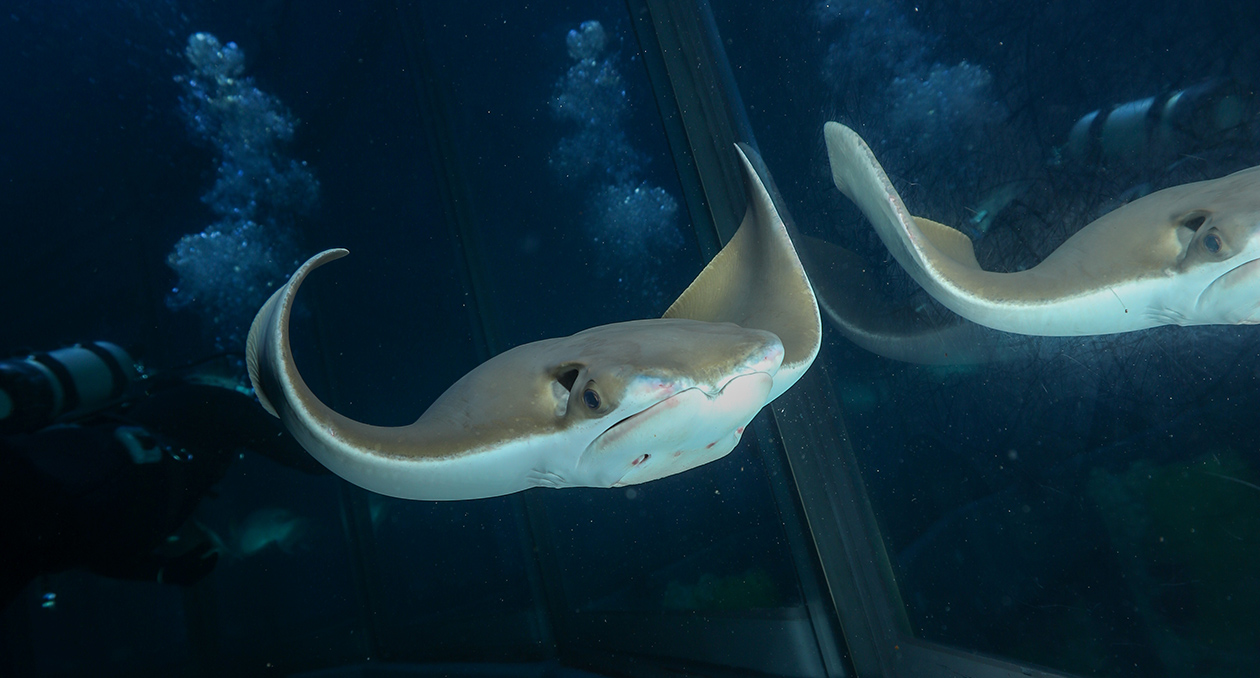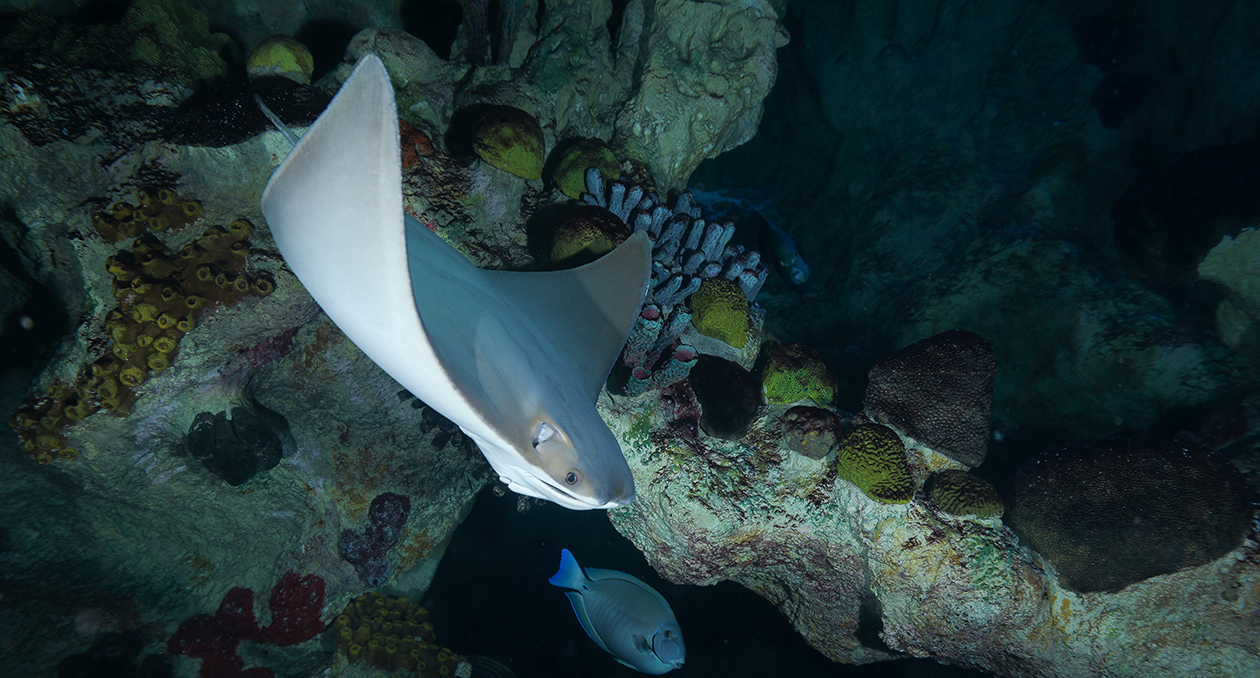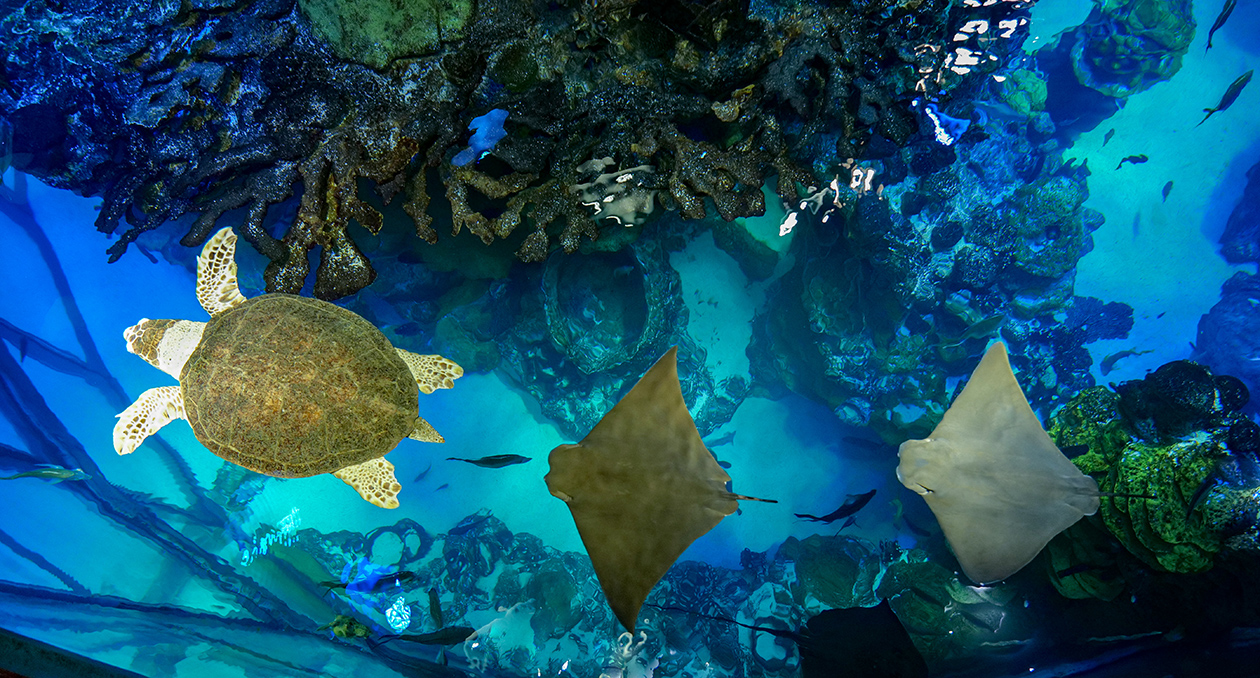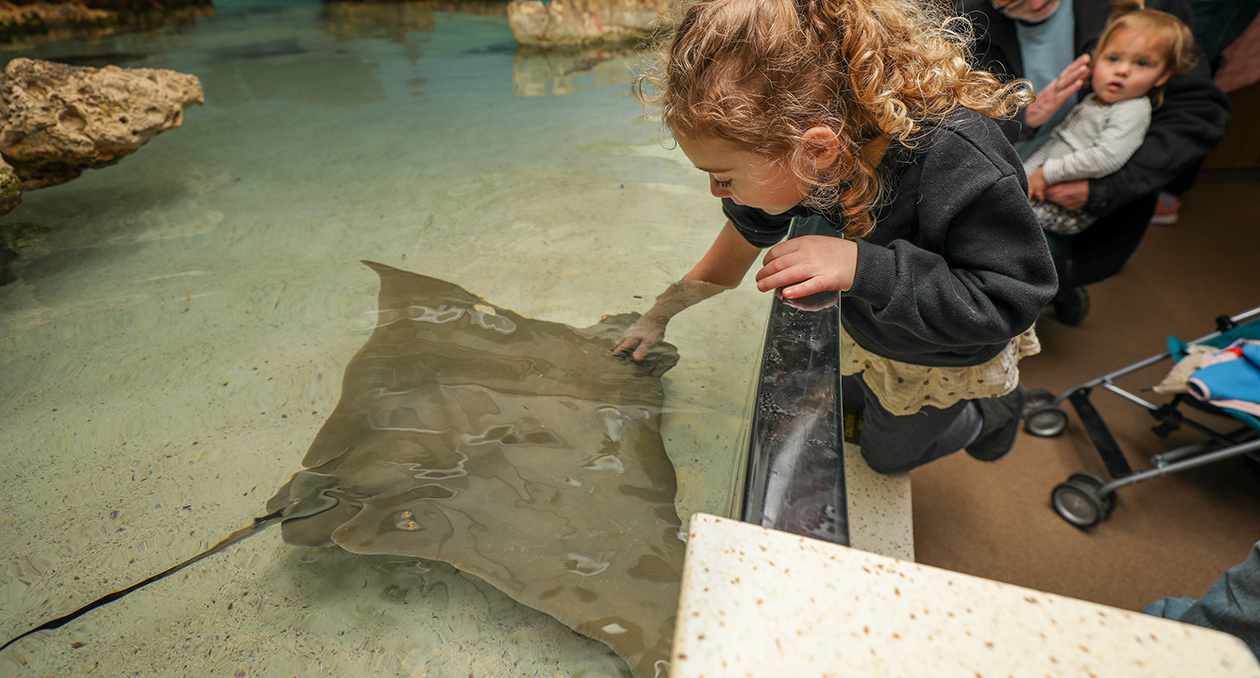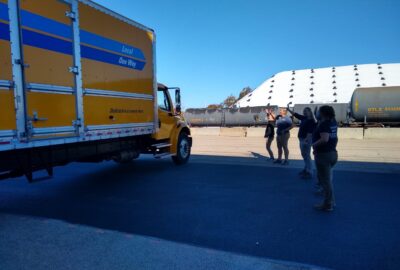Please note: We strongly recommend purchasing your tickets in advance to guarantee entry, as we do sell out on weekends and during school vacation week (April 15–19). A limited number of tickets will be available onsite for walk-up purchases when we open at 9:00.
Cownose rays travel through the water in large groups, or schools. Schools of up to 10,000 rays have been seen between Florida and Yucatán in Mexico. Meet these fascinating rays in the Aquarium’s touch tank, or spot them swimming around the Giant Ocean Tank.
Animal Facts
Size
Up to 48 inches wide
Diet
Oysters, clams, snails, and crabs
Lifespan
Thought to be 13 to 18 years
Range
Atlantic Ocean from New England to the south Caribbean, including the Yucatan, northern parts of South America, Western Africa, and the Cape Verde Islands
Conservation Status
Near Threatened
Threats to Survival
- Bycatch
- Climate change
- Habitat loss
Do cownose rays sting?
Cownose rays, like other stingrays, have a stinging barb on their tail that is used to protect themselves if they are threatened by other animals. Although rays are not aggressive, all the rays in the touch tank have had their stinging barbs trimmed back as an added precaution.
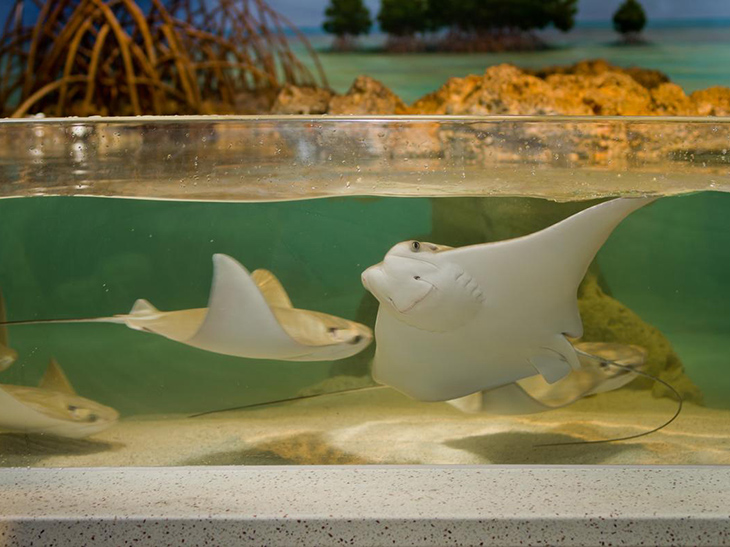
/

